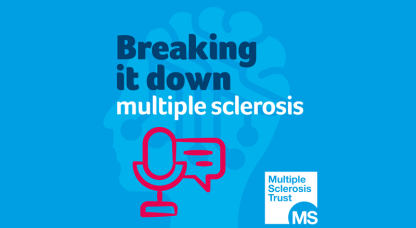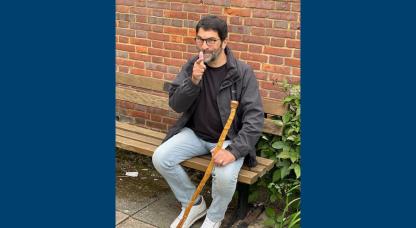A personal experience of an MRI scan shared by someone who lives with MS.
What is it like to have an MRI scan?
1 January 2022
Before the scan
Assuming that you are not in hospital and it is not an emergency, an appointment letter arrives from the Imaging Department, with a date and time for your scan. If that does not suit you, you can ring up and ask to change it. If you can't make it, let them know - I have always found them very helpful.
The Imaging Department usually sends information about what to expect. You don't usually have to stop eating or drinking before the scan, and should take all your normal medicines unless told otherwise. Some scanners allow you to listen to your own music, so they may suggest you bring a CD to the appointment.
Because of the strong magnet field (it is actually 20 or more times the normal earth's field strength), you can't have anything on or in your body that is magnetic. This could cause confusion on the pictures. You may get a safety questionnaire with your appointment letter or when you arrive for the scan.
Before you go into the scanner, you will have to confirm whether or not you have a variety of implanted things, such as a pacemaker or surgical clips. Tooth fillings do not usually matter. They may ask about kidney failure and whether you might be pregnant. If you don't know whether something matters, you can always ask.
I don't have any clothes that don't have at least one metal zip, hook or wire, so I usually use the hospital's gowns. I leave my personal belongings (including phone, credit cards, money, etc) that could be affected by a strong magnetic field in a locker - this may need a coin, so it is worth having a selection with you. There may be a metal detector to pass through before you go into the scanner room itself. If you do go near the machine with a metal hair grip or a metal belt still on, you will feel it twist and should go somewhere safe to remove it.
During the scan
If you are having gadolinium contrast they will need to put a needle into a vein at your elbow or on your hand. A plastic tube is attached through which the contrast may be given directly by hand. It should be painless and without any obvious effect on you. You will have been told you about any side-effects you might expect before the procedure.
The radiographer will ask you to lie on the scanner bed or table. There are pads they can put under the knees, to make you more comfortable if lying flat is not easy for you. It can get cold in the room, so they may offer you a blanket. They may offer you earphones with your music or theirs, or earplug.
A small, open cage-like structure goes in front of your face, possibly with pads to either side to support your head. Although it does not touch your face, it is like wearing a party mask and can seem rather odd. This focuses the magnetic field onto you and is important for getting the best pictures.
You may be given an alarm button to hold. If you squeeze this at anytime during the scan, they will know that you are not OK.
Once the radiographers are satisfied that you are in the right position, you have the earphones or ear plugs in place, you have your alarm button and are reasonably comfortable, the table is moved smoothly into the machine itself. The machine is generally tube shaped and the bore through the middle is not very generous. Only that part of you that is being scanned goes into the machine, so for a head or neck scan that is usually at least to your shoulders.
Some of these half cylinder structures have a little mirror just above your eyes, angled so that you can see out easily. If there isn't a mirror, you can probably see out by looking down towards your feet in any scanner, which can help if you are feeling like you are alone - you are not!
Then there are bumps, buzzes and other quite loud noises. These are the machine noises as the different scans are obtained. The radiographer in the control room will give you information over an intercom on how long each set of rhythmic bumps/buzzes will last. It is usually a few minutes for each set and there may be six to ten sets.
It is very important to keep still, but it isn't worth trying to hold your breath, the scans generally take too long. It is better to breathe gently rather than gasp. Likewise with swallowing. You may be moved out of the machine between sequences or they may do the sequences one after another. It does not matter if you go to sleep in the machine and they don't seem to mind the odd spasm.
If at any time you need to, you can press your alarm button or speak and they will come and get you. If you need to cough or get an itch, tell them and they can get you out, or give you a short break between sequences. Then you are moved out of the machine, released, have your plastic tube removed and can go home.
If you have had contrast, you may be told to drink extra to flush the contrast through the body, but they don't seem to mind what you drink!
Find out more
Latest news & stories
Sign up to updates from us
Keep up-to-date with the latest MS news, explore new research, read the stories of people living with MS, find out practical tips from MS experts, and discover exciting fundraising opportunities
If you would like to sign up for post or telephone (SMS) updates you can complete our sign up form here


